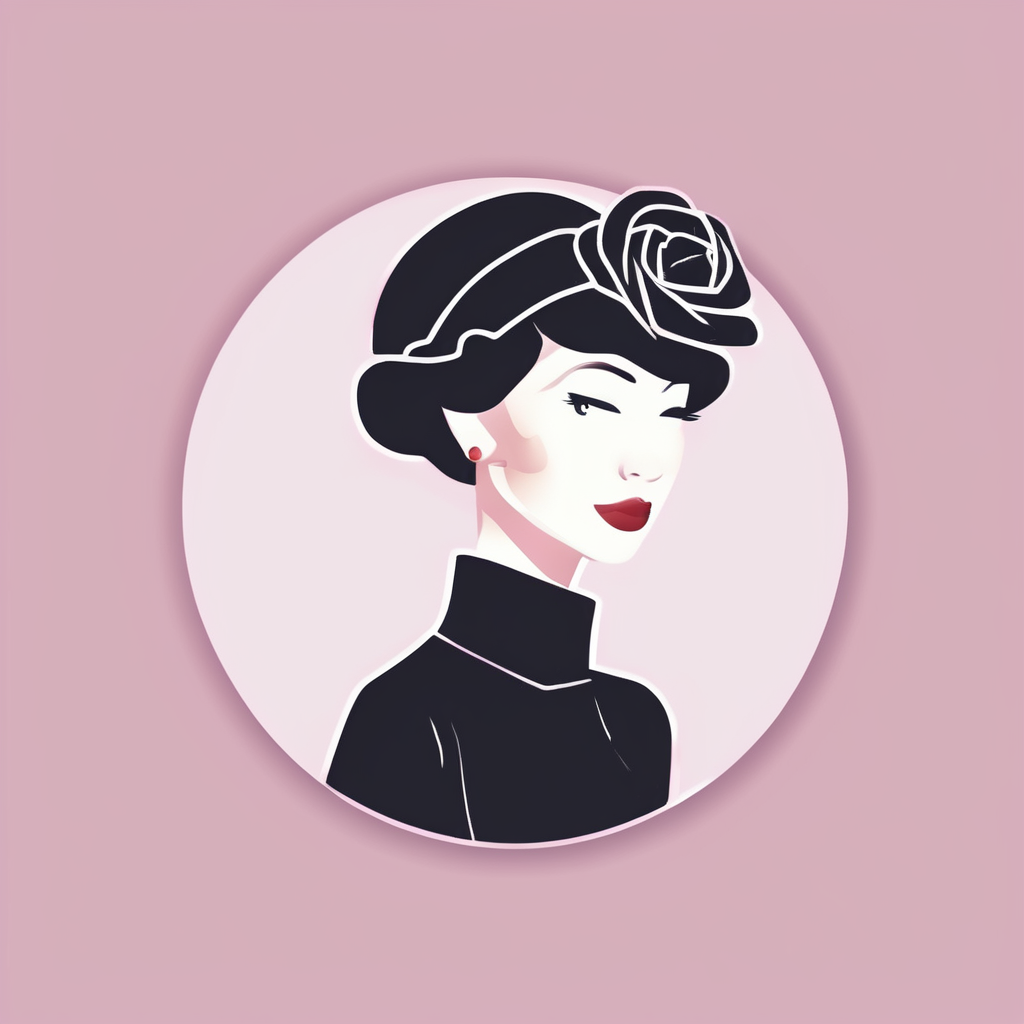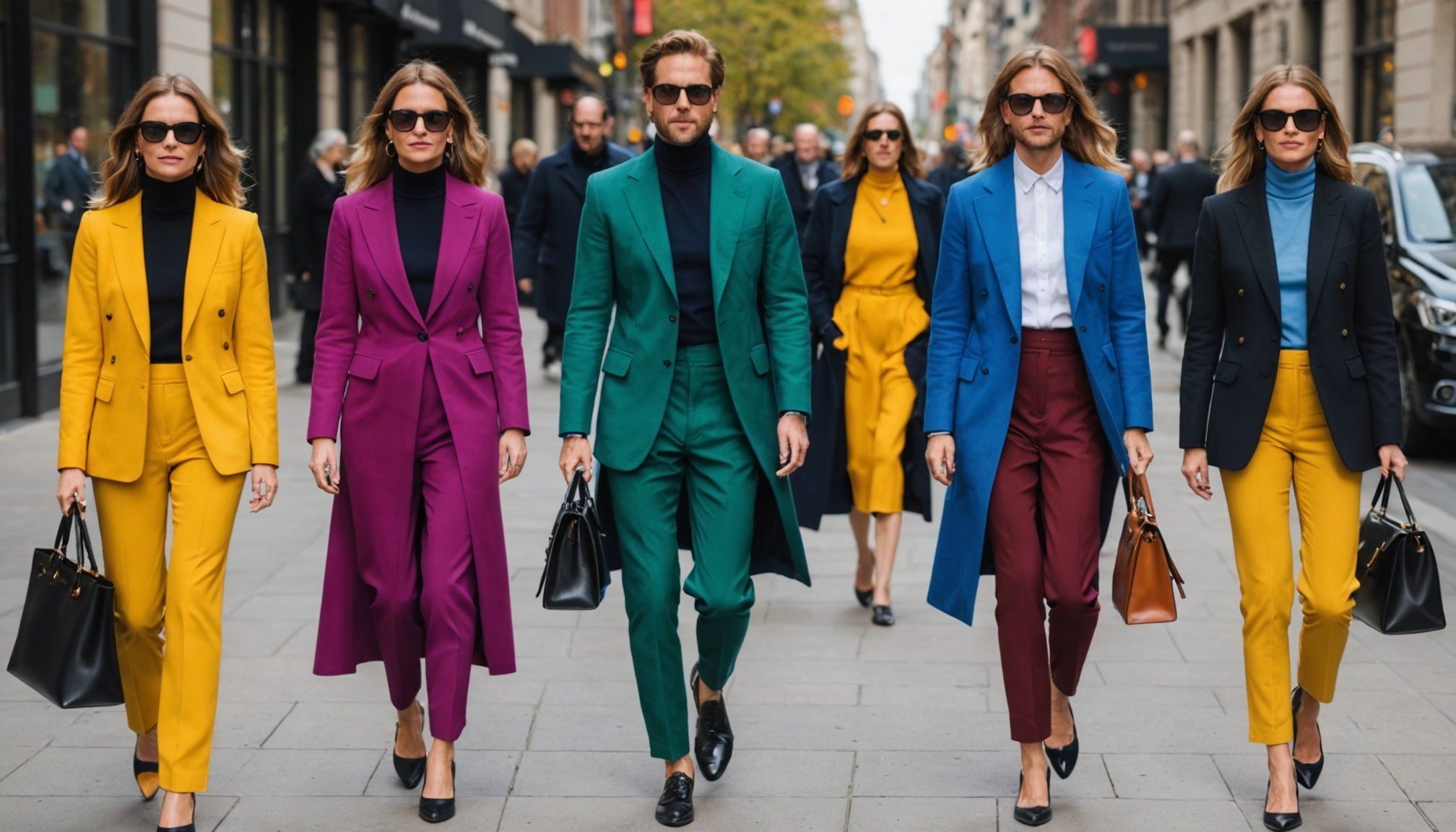Overview of Color Theory
Color theory is an enthralling topic that plays a crucial role in both artistic and everyday contexts. At its core, it is built on basic principles that guide our understanding of colors and their interrelationships. The color wheel serves as a fundamental tool in color theory, illustrating how colors interact harmoniously.
The wheel includes three primary colors: red, blue, and yellow. These foundational hues cannot be created by mixing other shades. From these, secondary colors such as green, orange, and purple emerge by combining two primary colors. Tertiary colors are then formed by mixing a primary color with a secondary color, offering a more nuanced palette.
In parallel : How can you achieve a chic look while staying comfortable during travel?
In the realm of fashion and design, the color wheel is invaluable. It aids in crafting visually appealing combinations that can elevate style choices. By understanding which shades are complementary, designers can create ensembles that are aesthetically pleasing and sophisticated.
Furthermore, color theory extends beyond aesthetics, as it profoundly influences emotional and psychological responses. Red, for example, can evoke excitement, while blue may induce calmness. By leveraging these effects, one can strategically choose colors to convey specific moods or messages. This makes color theory not only fascinating but also a powerful tool in various fields.
Also read : Enhance your natural lip color: proven makeup tips for a gorgeous transformation!
Selecting Colors for Confident and Professional Outfits
Selecting the right color palette can significantly enhance your professional image. Certain colors convey authority and reliability, helping you to project confidence. Blue, for instance, is known for its association with trust and dependability. It’s a color often used in corporate settings to communicate calmness and professionalism. Meanwhile, black is synonymous with power and sophistication, making it an excellent choice for leadership roles.
Contrasting colors can also play a pivotal role in creating visual impact. When you pair complementary shades strategically, it draws attention and denotes a keen sense of style. Despite the allure of bold hues, it’s crucial to maintain equilibrium in your outfit. This balance can be achieved by pairing vibrant colors with neutral shades like grey, beige, or white, ensuring the ensemble remains polished and not overwhelming.
Tips for balancing include using bold colors sparingly or as an accent—perhaps a red tie against a neutral suit or a brightly colored scarf paired with a subdued jacket. This approach maintains professionalism while adding personality to your attire. Ultimately, the deliberate color selection reinforces both your confidence and professional demeanor.
Outfit Combinations for Different Meeting Types
Creating the right outfit combinations can significantly impact how you present yourself in various meeting types. Selecting appropriate attire is crucial, whether you’re attending a formal business meeting, a creative brainstorming session, or a networking event.
Business Meetings
For conservative business meetings, embracing subtlety in your color palette is essential. Shades like navy, black, and grey are universally accepted in formal settings.
- Consider classic outfit combinations such as a crisp white shirt paired with a tailored navy blazer and trousers or a black pencil skirt.
- Adding accessories, like a sophisticated watch or understated cufflinks, can enhance your professional look without appearing ostentatious.
- Opt for leather shoes in neutral colors, as they seamlessly blend with your ensemble, reinforcing a cohesive and polished image.
While fashion can seem trivial, your attire communicates volumes in these settings, conveying competence and attention to detail. Balancing the right fashion coordination with your professional image fosters confidence and respect from peers and superiors alike. In summary, selecting the appropriate clothing for business meetings demands attention to conservative styling and subtle creativity in accessorizing.
Practical Examples and Visual Aids
In the world of fashion, visual aids play a crucial role in simplifying complex concepts and sparking creativity. When it comes to designing outfits, incorporating well-curated color palettes can transform a selection of clothes into a cohesive look. These palettes often capture particular moods or themes and guide both novice and experienced fashion enthusiasts in selecting harmonious hues.
Imagine choosing an outfit but uncertain whether your colors clash or match. That’s when outfit illustrations become invaluable. By providing these visual representations, complex ensemble ideas are conveyed at a glance. Illustrations demonstrate how various pieces can work together, revealing combinations that might not be apparent from looking at individual items alone.
To make the most of these tools, actionable takeaways are essential, offering readers simple yet effective strategies they can apply. For instance, a visual guide showing three dominant colors in an ensemble alongside accessories allows readers to translate theory into practice.
Visual aids like color palettes and outfit illustrations underpin clarity and understanding, removing ambiguity when coordinating attire. They empower individuals to express themselves confidently and creatively through their clothing choices without relying on trial and error.
Understanding Color Theory in Fashion
The world of fashion profoundly integrates color theory, offering an array of strategies to enhance or modify appearance. By understanding basic color theory principles, one can embrace the power of hues effectively. At its core, color theory involves the color wheel, which categorizes colors into primary, secondary, and tertiary. This structure assists in creating visually appealing combinations in attire.
The Psychological Impact of Different Colors
Color psychology plays a pivotal role in influencing perception and emotion. Each color can evoke specific feelings, which can be harnessed in fashion choices. For example, blue is often linked to trust and calmness, while red can evoke passion and energy. Fashion enthusiasts leverage this insight to convey messages or moods in their outfits.
When applied to fashion, color schemes such as complementary, analogous, or triadic can transform even the simplest outfit into a statement piece. Understanding how colors can impact emotions and perceptions allows individuals to make informed decisions when dressing, especially in professional settings.
Importance in Professional Attire
In professional attire, thoughtful color schemes are crucial. A tailored color palette not only enhances the wearer’s presence but also communicates competence and approachability. Colors like navy and grey offer a sense of reliability, while subtle use of brighter shades can introduce dynamism without overwhelming a professional environment.
Color Combinations for Key Meetings
Choosing the appropriate color combinations for meetings can greatly impact how you’re perceived in a professional setting. Dressing in stylish outfits doesn’t only reflect your personal taste, but also your understanding of the meeting’s context.
Effective Color Pairings for Interviews
When preparing for an interview, selecting the right color combination is crucial. Neutral shades like navy blue, black, or grey paired with white or pastels often work well. These combinations suggest professionalism and reliability. Adding a subtle pop of color through a tie or blouse can make your outfit memorable without being overpowering.
Colors that Convey Authority and Confidence
Professional attire should convey authority and confidence. Darker shades, such as charcoal grey or deep navy, inherently carry a sense of power. They are especially effective in leadership scenarios. However, it’s essential to ensure these colors are complemented with lighter shades to prevent an overly formal appearance.
Creating a Balanced Look
Achieving a visually appealing balance is key. Mixing lighter colors with bold hues can create an inviting and confident look. For example, pairing a light blue shirt with a dark suit jacket balances the outfit, maintaining professionalism while adding a touch of personality. Remember, the goal is to appear confident, not intimidating.
Dressing Appropriately for Business Meetings
Navigating the world of business attire can appear daunting, but understanding basic guidelines simplifies the process. Dressing suitably for different meeting contexts involves three main factors: the nature of the meeting, the company’s dress code, and the industry norms.
Meeting Attire Guidelines
- Formal Attire: This is customary for high-level meetings, such as boardroom gatherings or negotiations with external stakeholders. A traditional suit in neutral tones like navy, grey, or black is advisable.
- Business Casual: Ideal for internal meetings, this style allows more flexibility. Swap the suit for neatly pressed trousers or skirts and collared shirts.
- Creative Professional: In industries like advertising and design, you might express individuality while maintaining professionalism. Incorporate bold colors or unique accessories, yet balance them with tailored basics.
Adapting your color choices can help navigate the atmosphere of the room. For instance, darker tones often convey authority and confidence, suitable for formal settings, while lighter shades may foster openness and approachability, perfect for brainstorming sessions. Ultimately, the goal is to respect professional dress codes while considering the context of each meeting to leave a positive impression.
Visual Examples of Stylish Outfits
Exploring fashionable options can be an exciting journey. Finding the perfect outfit inspiration is key, and understanding how to pair colours is part of this process. Here’s a comprehensive style guide to ignite your creativity and sharpen your look.
Outfit Ideas for Men
Men’s fashion offers a wide spectrum of colour examples and styles. Classic combinations like navy and white harmonise for a timeless look. Alternatively, grey with a pop of burgundy adds a modern twist. Accessories such as watches or ties can inject a subtle hint of colour, aligning with seasonal influences.
Outfit Ideas for Women
Women’s professional wear benefits greatly from strategic colour use. Neutral bases like black or beige provide a foundation, while bold colours like emerald or cobalt create striking contrasts. Experimenting with these style guide suggestions can refine both everyday and office wardrobes.
Seasonal Color Trends
Seasonal trends significantly impact colour choices. Spring favours pastels, while summer embraces bolder hues. Autumn brings rich, earthy tones, with winter opting for deeper shades like plum or navy. Understanding these trends aids in selecting the right outfit for every season, ensuring you remain stylishly attuned.
The Impact of Color on Perception and Mood
The power of color perception in a workplace is undeniable. Specific hues can significantly influence emotions and behavior. For instance, blue often evokes feelings of calm and professionalism, making it ideal for corporate settings. Meanwhile, red can increase energy levels and stimulate creativity, although it might also prompt anxiety if overused.
Understanding the mood influence of colors is critical for creating environments aligned with desired business outcomes. In settings where teamwork is paramount, colors like green or yellow can foster collaboration and boost morale. On the other hand, neutral tones often convey stability and authority, essential for environments requiring focus and formality.
In the context of business psychology, color choices are pivotal in shaping a professional image. Utilizing the right color palette in branding or office decor can enhance credibility, foster trust, and even influence clients’ decisions subconsciously. As such, professionals must carefully consider their color selections to align with their intended persona and the company’s values.
Personal branding also benefits from strategic color use in meetings. Opting for colors that reflect confidence and competence can reinforce one’s professional identity. Individuals should tailor their color choices to the nature of the meeting, ensuring a harmonious blend with their message and objectives.











